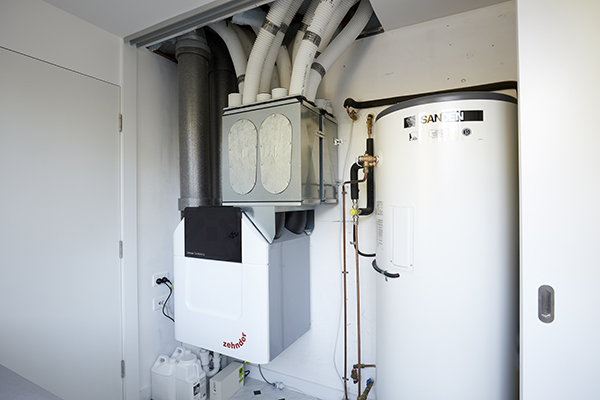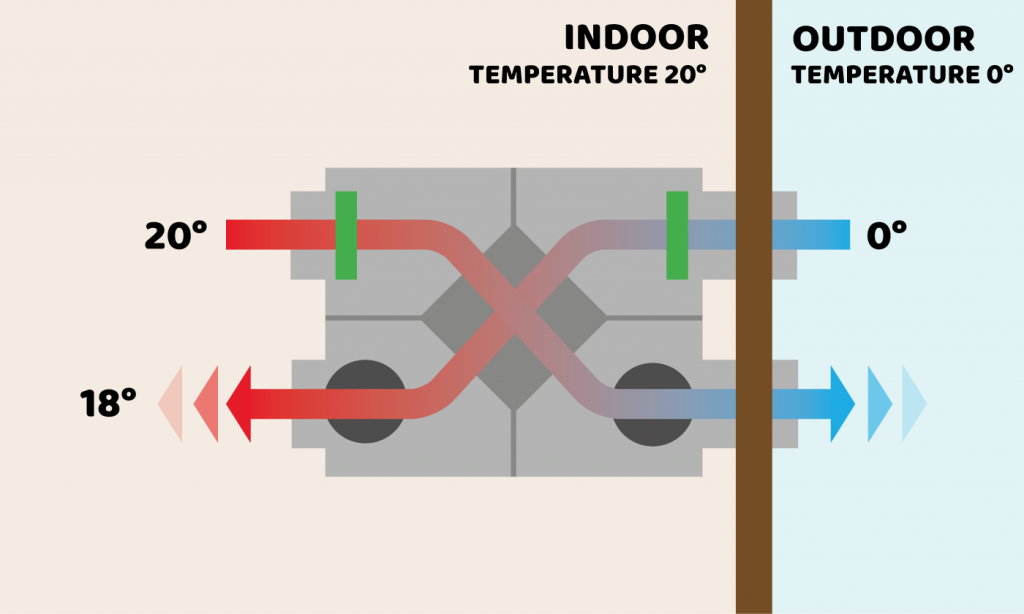Money-Saving Potential of HRV for Homeowners
Wiki Article
Checking out the Advantages of Heat Recovery Ventilation for Energy Effectiveness in Houses
Heat Recovery Ventilation (HRV) systems offer homeowners a sensible approach to improving power effectiveness. By reclaiming heat from outbound air, these systems can considerably reduce cooling and heating prices. Additionally, they provide a constant supply of fresh air, improving interior air top quality and convenience degrees. As home owners think about sustainable choices, recognizing the nuances of HRV systems ends up being significantly essential. What elements should one assess before making such an investment?Recognizing Heat Recovery Ventilation Solutions

Just How HRV Enhances Indoor Air High Quality

Power Savings: The Economic Benefits of HRV
Optimizing energy performance, heat recovery ventilation (HRV) systems offer considerable financial advantages for house owners. By recouping and recycling warmth from exhaust air, HRVs substantially minimize heating & cooling expenses. This modern technology can lead to power cost savings of approximately 30%, relying on climate and use patterns. Home owners typically notice lowered utility expenses shortly after installation, making HRVs a financially sensible financial investment over time. Additionally, many areas provide motivations or rebates for energy-efficient upgrades, additionally boosting the monetary allure. As power prices proceed to rise, the cost-effectiveness of HRVs ends up being increasingly clear. In general, the unification of HRV systems not only promotes energy performance however likewise adds to long-term economic cost savings for families.The Environmental Influence of Heat Recovery Ventilation
try hereA substantial environmental advantage of heat recovery ventilation (HRV) systems hinges on their capability to lower overall energy consumption. By reclaiming warm from exhaust air and transferring it to inbound fresh air, HRV systems minimize the demand for energy-intensive heating and cooling down techniques. This decrease in power demand adds to lower greenhouse gas emissions, as much less nonrenewable fuel source is required to preserve comfortable indoor temperatures. Furthermore, HRV systems boost indoor air high quality by successfully exchanging stale air with fresh exterior air, reducing reliance on mechanical cooling systems that can hurt the atmosphere. Generally, the application of HRV systems supports sustainable living techniques and lines up with international initiatives to fight climate modification by promoting power performance in residential settings.
Picking the Right HRV System for Your Home
Exactly how can homeowners assure they choose the best heat recovery ventilation (HRV) system for their requirements? They should examine their home's size and format, as these variables influence air flow needs. Next off, evaluating the system's effectiveness scores is vital, as higher rankings show much better performance and energy savings. Property owners need to also think about installment and upkeep prices, contrasting various brands and models for worth. Additionally, it is very important to examine noise degrees, as some systems run more silently than others. Consulting with a/c professionals can provide tailored suggestions based on certain home conditions. Taking a look at customer evaluations and guarantees can aid in making a notified decision, making sure that the selected HRV system successfully boosts indoor air high quality and energy effectiveness.Frequently Asked Questions

Just how Typically Should I Tidy or Keep My HRV System?
The regularity of cleaning or preserving a warmth recovery air flow (HRV) system commonly relies on use and environmental elements. Usually, it is advisable to perform upkeep every six months to ensure peak performance and air high quality.
Can HRV Solutions Assist Decrease Moisture Degrees Inside Your Home?
visite siteHRV systems can efficiently decrease interior moisture degrees by exchanging stagnant, damp air with fresh, drier air from outdoors. HRV Heat Recovery Ventilation. This procedure assists preserve a balanced indoor environment, improving comfort and preventing moisture-related problems
What Is the Lifespan of a Normal HRV System?
The life-span of a common heat recovery ventilation (HRV) system differs, usually lasting in between 10 to 15 years. Regular maintenance can prolong its performance and functional life, guaranteeing peak performance throughout its use duration.Are There Any Kind Of Sound Worry About HRV Equipments?
Sound worries with HRV systems can emerge, particularly from fan procedure. Lots of contemporary systems are designed to reduce audio degrees, guaranteeing they run quietly while keeping efficiency, which resolves possible disruptions in living atmospheres.Can I Set Up an HRV System Myself, or Do I Required a Specialist?
The individual contemplated whether to install the heat recovery ventilation (HRV) system personally or work with a see it here professional. Normally, while do it yourself installment is feasible, know-how guarantees appropriate capability and compliance with neighborhood structure codes, improving system efficiency.Report this wiki page